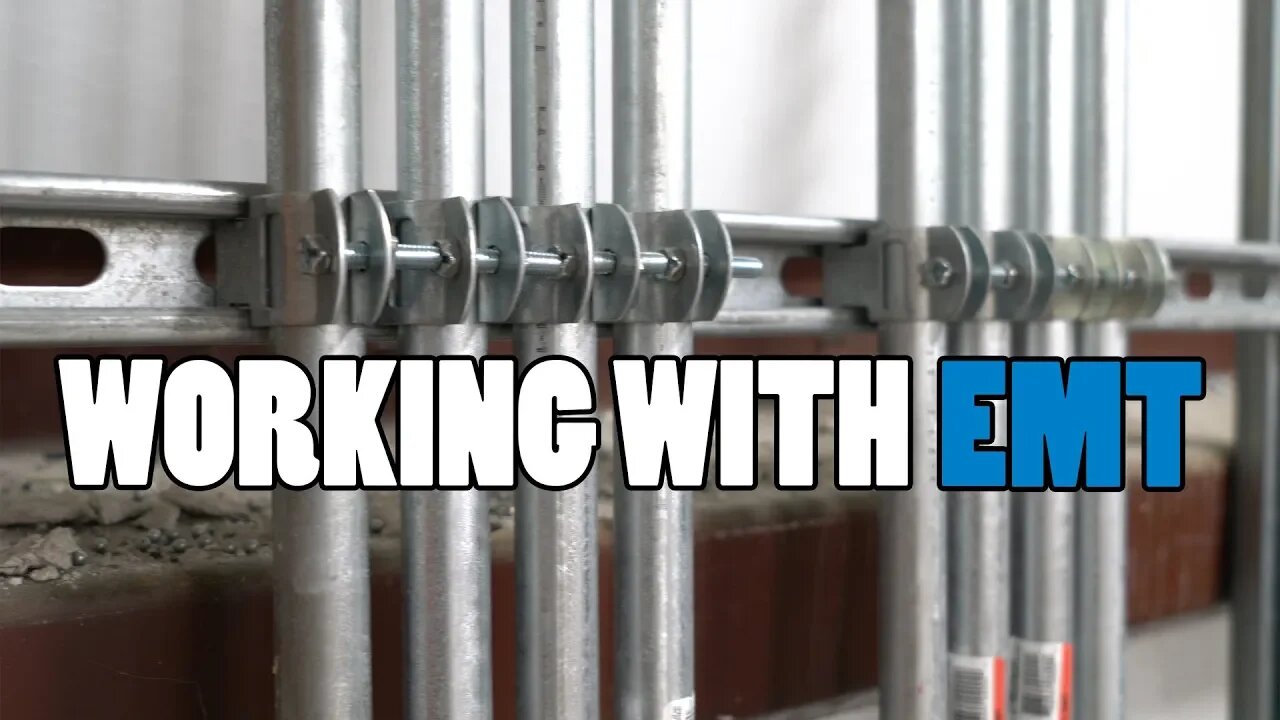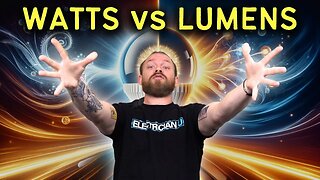Premium Only Content

Working With EMT - ELECTRICAL METALLIC TUBING and What Electricians Should Know
This video covers everything you need to know about working with EMT (electrical metallic tubing) as an electrician. I cover the topics discussed in the national electric code article 358 on uses permitted, securing and supporting, and much more.
👾🤖PRACTICE EXAMS🤖👾
https://www.electricianu.com/practice-exams
😎👕MERCH👕😎
https://www.electricianu.com/merchandise
📲👥SOCIALS👥📲
Instagram - https://www.instagram.com/electrician_u
Discord - https://discord.gg/7ykYfbh
Facebook Page - https://www.facebook.com/theelectricianu
Facebook Group - https://bit.ly/2tz7eQh
TikTok - https://www.tiktok.com/@electricianu
SPONSOR
ROGERS - https://www.rogersservices.com
This video is more of a code-overview of EMT, so lets begin at the beginning of article 358 of the NEC with the uses permitted and not-permitted.
358.10 - USES PERMITTED
EMT is allowed to be used in dry, damp, and wet locations as well as in concrete or direct contact with the earth as long as you follow 358.10(B)
There are different types of EMT that have different properties as well, so make sure that you're using the correct type in the correct environment before making assumptions that everything is ok for general use. For example Aluminum EMT is not approved to be direct buried unless there's a supplimentary coating or protection around it - whereas stainless steel and galvanized steel EMT are allowed.
358.12 - USES NOT-PERMITTED
You cannot install EMT where it is subject to physical damage, or where it is used as a support for a luminaire or other equipment. For both of these RMC (rigid metal conduit) would be acceptable. So if you're working in parking garages near vehicle traffic, or in corrosive environments where the EMT may get damaged, you need to use a better method like Rigid to protect your conductors.
358.14 - DISSIMILAR METALS
Galvanic action is a serious issue to look into when dealing with dissimilar metals touching each other. A lot of people don't think about this when installing conduit, but the nature of two different metals is that one of them is more active and the other is more passive. The more passive metal will begin to weaken/corrode the more active metal and over time may destroy the active metal. This is especially dangerous when using EMT as an equipment grounding conductor. Over a long enough time, that one complete conduit system may turn into several disjointed segments due to corrosion, leaving you with no equipment ground.
358.20 - SIZE
There are minimum and maximum trade sizes that are allowed to be used as EMT. They must be no smaller than 1/2" and no larger than 4." You can't just take a piece of 6" pipe, slap some conductors in it, and call it EMT.
358.24 AND .26 - BENDS
348.24 specifically talks about ensuring that when bending conduit, your bends are not damaging the internal diameter of the tubing, and not reducing the diameter of the tubing. This makes damaging the conductors inside more likely, as well as more difficult to pull in or out.
358.26 Talks about how many bends you can have in one complete run of EMT - from box to box, or pull point to pull point. The max for most conduits/tubing is 360 degrees of bends. So that means no more than 4 90-degree bends from one box to another. The more you do this you'll see why this is - it's difficult as hell to get conductors pulled through, and more often than not you damage the insulation of the conductors when pulling both in and out - if more than 360 degrees of bends exist in the run.
#emt #conduit #electrical
--
Subscribe - https://www.youtube.com/c/electricianu?sub_confirmation=1
IF YOU ENJOY THESE VIDEOS PLEASE SUBSCRIBE AND "LIKE" THEM ABOVE. ALSO CHECK OUT THE ELECTRICIAN U PODCAST ON ITUNES AND SPOTIFY!!
-
 6:27
6:27
Electrician U
1 year ago💡 Watts vs Lumens: The New Lighting Standard You Need to Know! 💡
7.54K6 -
 LIVE
LIVE
megimu32
1 hour agoOTS: From Star Search to Superstardom
158 watching -
 1:46:17
1:46:17
Glenn Greenwald
4 hours agoGlenn Takes Your Questions on Censorship, Epstein, and More; DNC Rejects Embargo of Weapons to Israel with Journalist Dave Weigel | SYSTEM UPDATE #505
80.1K3 -
 LIVE
LIVE
Jokeuhl Gaming and Chat
6 hours agoHelldivers 2 - Spreading Democracy w/ Ryker
18 watching -

Stephen Gardner
1 hour ago🚨BREAKING: Trump FURIOUS Over Kamala’s Latest Move – SHOCKING Details!
1.81K9 -
 8:00:13
8:00:13
Dr Disrespect
9 hours ago🔴LIVE - DR DISRESPECT - GEARS RELOADED GLOBAL LAUNCH - CRUSHING LOCUST
97.6K13 -
 LIVE
LIVE
Reolock
2 hours agoWoW Classic Hardcore | One level at a time
18 watching -
 LIVE
LIVE
Spartan
4 hours agoScrims vs FaZe then Ranked + Expedition 33
3 watching -
 57:00
57:00
BEK TV
22 hours agoOpen Range
1.6K -
 1:06:27
1:06:27
BonginoReport
4 hours agoBig Bad JB Threatens Trump! - Nightly Scroll w/ Hayley Caronia (Ep.120) - 08/26/2025
95.4K40